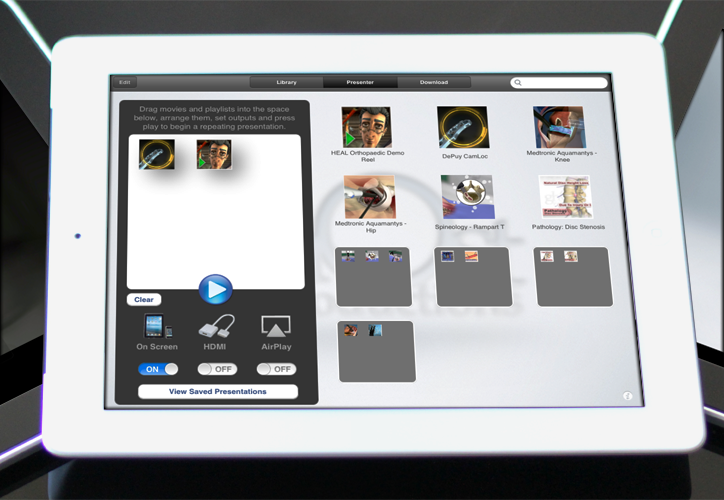3D Tech: Everything You Need to Know About the 3rd Dimension
Written by: Stephan Kuslich Founder & CEO of Ghost Productions
3D Stereoscopic Technology
They’ve been around for decades: 3D movies that have been giving audiences nominal “fly off the screen” thrills via the iconic 3D glasses with the cardboard red and cyan lenses that trick the eyes into perceiving depth where none exists. Throughout the ages, Ghost Productions has had an interesting experience with various 3D tech that range from static holographic printing to glasses-free auto-stereoscopic projectors. Only recently has the display technology advanced to the point where we’ve felt good enough about the quality of the output that we began offering this as a standard service to our clients.
Why Go Stereoscopic?
Because it’s awesome! When stereoscopic 3D projection content is made well, it truly does float off the screen, making the viewing experience significantly more immersive. But this isn’t just about theatrical gimmicks, it is about representing visual information in a similar fashion to actually “being there,” rather than just watching it on a flat surface. This means that 3D laparoscopic surgeries can more accurately be presented, and it is possible to create imagery that is significantly richer in depth and detail than flat images could ever depict.
Why Go Stereoscopic Now?
Because it’s finally become affordable and easy! While stereoscopic technologies have existed for a very long time, actually producing content for 3D projection has only become worthwhile since the advent and proliferation of a standardized digital stereoscopic format. High-definition televisions made it possible to increase image resolution enough to create significantly sharper images that do not degrade when projected. BluRay discs made it possible to store the HD stereoscopic digital format that requires twice the fields of flat HD imagery (one field per eye). These two technologies made it possible for manufacturers to produce high-quality 3D stereoscopic projection solutions at a price that consumers could afford to put in their homes.
Additionally, advancements in digital compression permitted the digital 3D stereoscopic format to be broadcast over the Internet, allowing playback via YouTube and Vimeo to computers with stereoscopic screens and Internet-connected stereoscopic televisions. Finally, stereoscopic media has a viable delivery method with affordable 3D displays. Now that 3D for consumers has been standardized, we produce content in one format and the 3D decoding takes place within the playback device, no matter the technology platform.
Why Go Stereoscopic With Ghost Productions?
Because we know the tricks to making and keeping it awesome, affordable, and easy! We have tons of experience with 3D technology, both present and obsolete, and we know how to make content that effectively mimics natural stereoscopic ocular cuing and depth perception. Because nearly everything we make already exists in a 3D virtual world, we are able to produce 3D stereoscopic content affordably. For a nominal fee, we can make a standard 2D animation grab your audience by the retina and make it impossible for them to look away.
3D Stereoscopic Buying Advice
When it comes to 3D TVs, I suggest a passive 3D tech as opposed to an active shutter 3D system. This is the rare situation where cheaper is actually the best, and I have yet to find a single reason to buy any other system. In my opinion, the passive systems have a significantly higher quality and project a significantly sharper image. As an added benefit, the glasses require no battery and offer more affordable options than active shutter systems.
Though I usually avoid brand-specific recommendations, there is no denying that LG is currently making one of the best passive 3D systems on the market. They also seem to hold up well for shipping back and forth to trade shows and conferences. LG also offers a lot of options for Internet-capable smart televisions that offer the additional benefit of loading content via the Internet. This comes in handy when using the television to review and approve new 3D content as it is being produced, without needing to wait to burn and ship DVDs. Another feature that you simply must have, if you want to use your 3D display for trade shows, is LED technology over Plasma. Plasma is less expensive but is prone to burn-in. This is a problem when your logo is being highlighted in the same spot on the screen, day-after-day, while the animation loops infinitely behind it.

For playback devices, any 3D-compatible BluRay player will produce good results, but for most of our clients, we suggest playing footage directly from their iPad2 (or newer) mobile devices using our free Ghost Remote app. This allows our clients to loop HD and HD 3D content all day long, and even allows our clients to edit and mix movies and animations to build custom presentations on the fly.
Our top pick for 3D displays is currently:
LG Class Cinema 3D Displays (with Smart TV)

LG 65LM6200 65” Street Price: $2,275
LG 55LM6200 55” Street Price: $1,255
LG 47LM6200 47” Street Price: $900
LG 42LM6200 42” Street Price: $750
LG 32LM6200 32” Street Price: $649
Interested in exploring a project with ghOst Productions? Send us an Email or visit our Homepage to get started!
